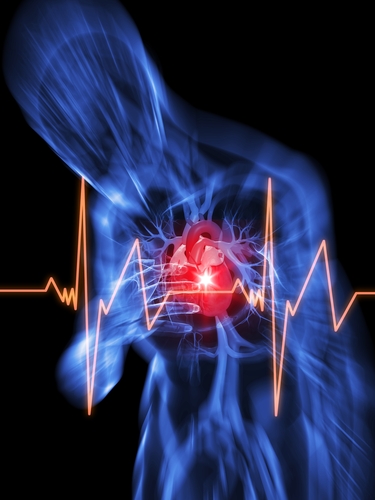Heart Attack
Definition of Heart Attack
Heart attack is a condition that happens when the supply of blood to a part of the heart is compromised. The heart doesn’t get its oxygen and nutrients and if the blood supply isn’t restored quickly, the affected part begins to die. In medical terms it is known as “myocardial infarction.”
Heart attack occurs when the arteries carrying blood to the heart (known as coronary arteries) get blocked or there is narrowing of these arteries. When this occurs heart is deprived of its critical blood supply. In coronary artery disease, fatty matter and other inflammatory cells deposit on the inner lining of these arteries and form plaques of different sizes. This is followed by the formation of blood clots on this plaque by the help of platelets (a type of blood cells). All this matter blocks the vessel and oxygen is not delivered to the heart. As the heart starves, it begins to die. The death of heart muscle cells causes a permanent damage and is known as heart attack.
Heart is supplied by a number of branches of the coronary arteries and the extent of damage to the heart is proportional to the number or type of artery that is involved.
Cause of Heart Attack
There are a number of factors that can lead to heart attack and a few of them are:
-
Smoking
Smoking is considered to be a major health risk. It is estimated that up to 36% of the cases of heart attacks are due to smoking.
-
Obesity
Lack of exercise and fatty foods cause weight gain. Sedentary lifestyle is the major cause of obesity. 20% of cases of coronary artery disease is because of obesity.
-
Stress
Stress has been implicated to cause heart attacks in a large number of people. Staying happy and leading a peaceful life can prevent it.
-
Alcohol
Long term consumption of large quantities of alcohol greatly increases the chances of heart attack.
-
Diseases
Diabetes, high blood pressure, hypercholesterolemia (high levels of cholesterol in the blood) have been found to cause heart attacks in a large number of these patients.
A number of other infections like influenza, pneumonia and by H.pylori are also associated with atherosclerosis (fat deposition in blood vessels) and myocardial infarction.
-
Oral contraceptives
Women who take oral contraceptive pills are at an increased risk of myocardial infarction, especially those who are already obese or smoke.

Signs and Symptoms of Heart Attack
Signs and symptoms of heart attack include:
-
Discomfort, heaviness or pain in the chest
-
Pain in the left shoulder radiating towards the left arm, left side of jaw or left side of the back
-
Shortness of breath
-
Sweating
-
Nausea and vomiting
-
Weakness
-
Anxiety
-
Rapid or irregular heartbeats
In some rare cases people have heart attack without any sign or symptom. This is known as a “silent” myocardial infarction. It is more common in diabetics.
Treatment of Heart Attack
Heart attack is a medical emergency. In case of heart attack, one should immediately go for aspirin or nitroglycerin. These drugs keeps the blood thin and the blood vessels patent so that the heart gets adequate blood supply.
For long term purposes, one of the three treatment regimens is opted:
-
Coronary angioplasty
This procedure is used to open up the narrowed coronary artery. In this procedure a catheter is passed through a large artery of the body (usually in the groin). This catheter has a balloon at its end. When the catheter reaches the affected vessel of the heart, under the guidance of X-ray, the balloon is inflated. Then a stent is passed through the catheter that keeps the vessel open.
-
Thrombolysis
This treatment involves injecting thrombolytics to the patient. These drugs break down clots in the body. These include drugs like reteplase, alteplase, and streptokinase.
-
Coronary Artery bypass graft
In some cases coronary angioplasty is not possible, e.g. when more than one coronary arteries are involved. In this situation angioplasty cannot be done and an alternative surgical procedure is opted. This procedure is known as coronary artery bypass graft. This procedure involves taking blood vessel from some other part of the patient’s body and using it as a graft. The vessel is usually taken from the leg (saphenous vein). The graft is connected to the affected vessel in such a way that the blood gets bypassed from the narrowed area of the vessel.
